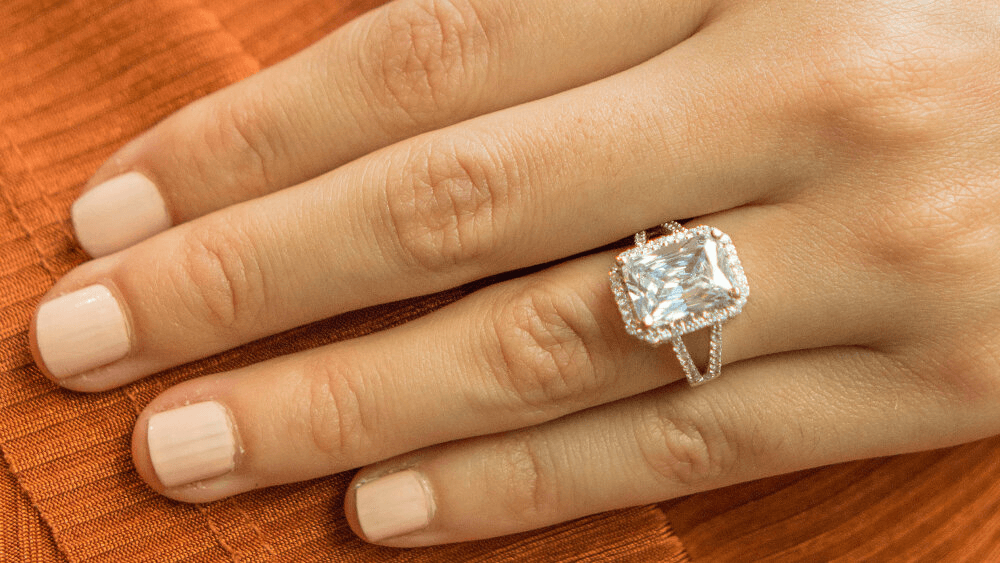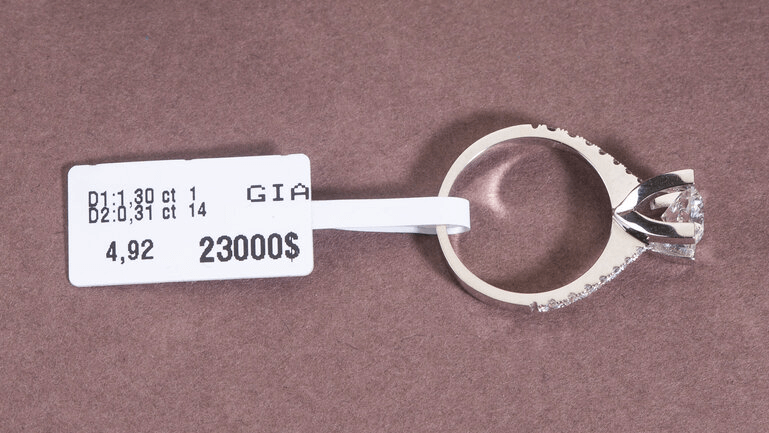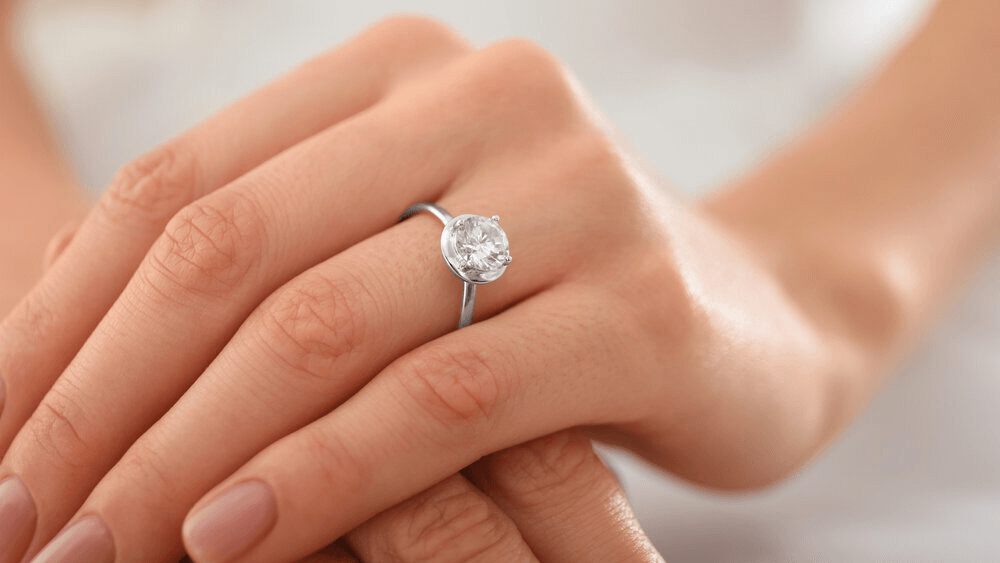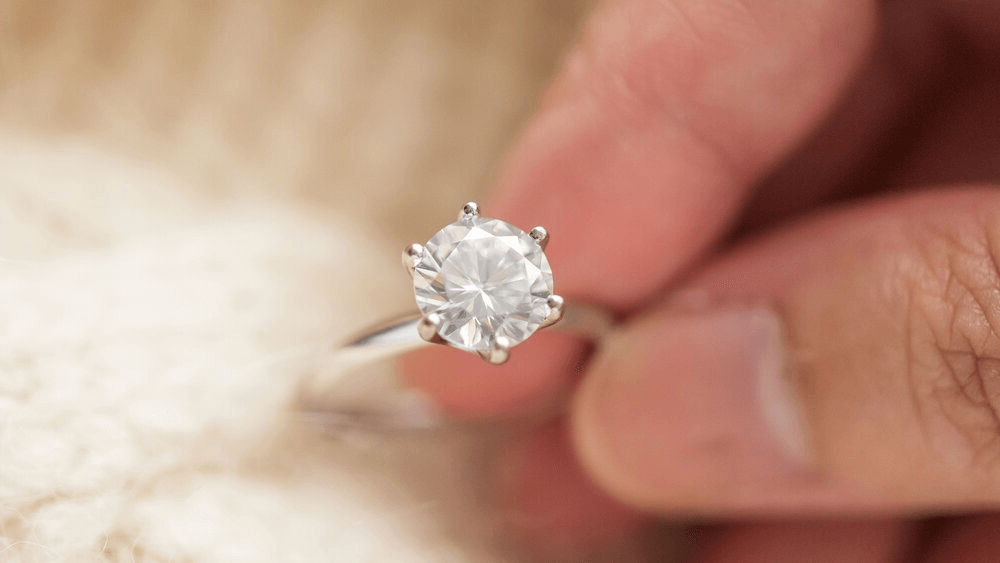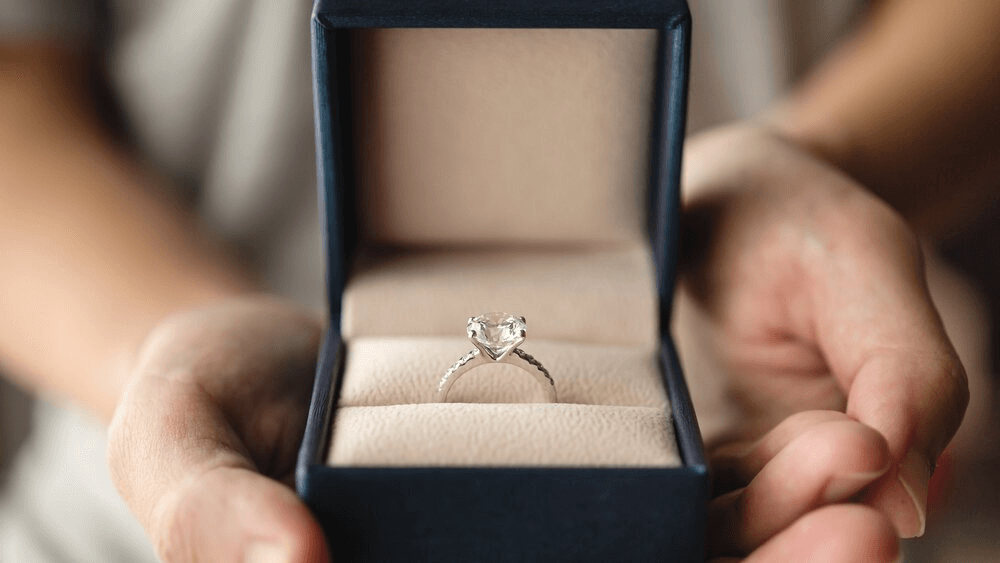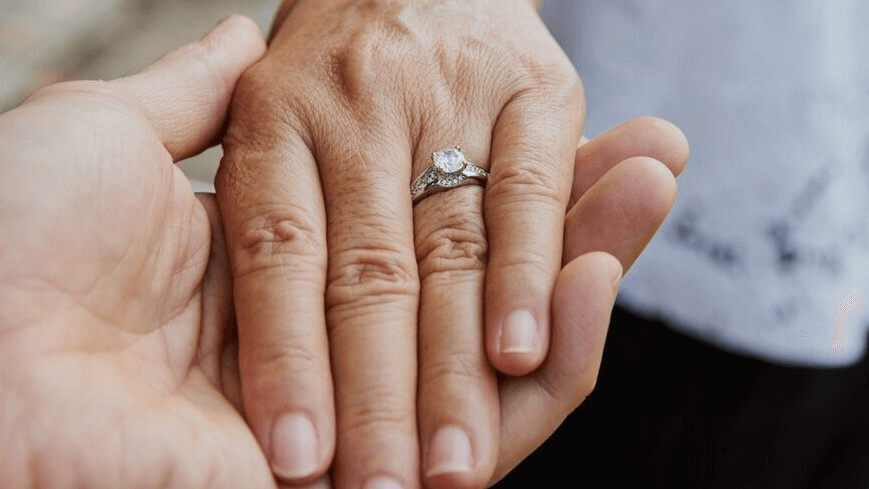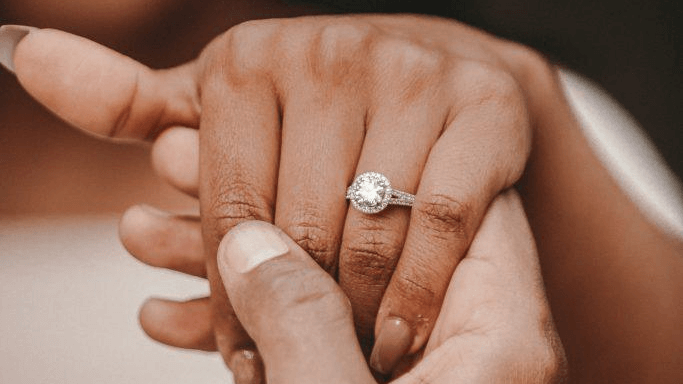The Secrets of a $20K Engagement Ring

By Gary A.

Edited by Olivia H.
Published Aug 13, 2024
Edited on Mar 31, 2025
$20,000 is, by anyone’s standards, a very healthy budget for an engagement ring. Then again, you’ve still got to understand how to use it wisely..
🎧 Listen to our expert insights:

Navigate this guide:
- 6 Quick Tips for Buying a $20,000 Engagement Ring
- Introduction to the Elegance of $20,000 Engagement Rings
- The Core of a $20,000 Investment: Authentic Diamonds
- Maximising the Value of Your $20,000 Budget
- Our Pledge to You: Best Value for Your Money
- 6 Frequently Asked Questions About $20,000 Engagement Rings
- Recently Purchased $20000 Engagement Rings for Inspiration
Before we dive deeper into the specifics, here are some practical tips to help guide your decision-making process:
6 Quick Tips for Buying a $20,000 Engagement Ring
Tip 1. Certification is Crucial:
- Always ask for a diamond’s certification. Renowned gemological institutes, like the Gemological Institute of America (GIA) or the European Gemological Laboratory (EGL), ensure the diamond’s quality and authenticity. This certificate will detail the diamond’s cut, clarity, color, and carat weight.
Tip 2. Understand the Four Cs:
- Cut: This impacts the diamond’s brilliance. Even if a diamond has perfect clarity and color, a poor cut can make it look dull.
- Color: Diamonds are graded on a scale from D (colorless) to Z (light yellow). Ideally, aim for G-H range for the best value without compromising much on the visible color.
- Clarity: Most diamonds have imperfections, known as inclusions. The fewer inclusions, the clearer (and more valuable) the diamond. However, many inclusions are microscopic and won’t impact the diamond’s beauty.
- Carat: While size matters, a larger carat doesn’t always mean a better diamond. It’s the combination of all four Cs that determines its true value.
Tip 3. Inspect the Setting:
- For a $20,000 engagement ring, the setting is as important as the diamond. Whether it’s prong, bezel, or pave, ensure the setting complements both the diamond and the wearer’s hand. The setting should also securely hold the diamond.
Tip 4. Know the Return Policy:
- Given the amount you’re investing, it’s crucial to buy from a jeweler that offers a robust return or exchange policy. Sometimes, the ring might look different in natural light, or perhaps you may have second thoughts about the design.
Tip 5. Be Skeptical of “Deals”:
- If a deal sounds too good to be true for a diamond of this price range, it probably is. It’s a red flag if a jeweler is offering a significantly lower price than what you find elsewhere for a similar quality and size.
Tip 6. Avoid Pressure:
- Take your time. Buying an engagement ring, especially one at this price point, is a significant decision. Do comprehensive research, consult, and avoid salespeople who push you to make a hasty decision.
Now that you’ve got these practical tips, use Jeweler AI below to find the perfect engagement ring that suits your style and budget:
Introduction to the Elegance of $20,000 Engagement Rings
Compared to some of the engagement ring costs we talk about on our blog, it’s acceptable to see $20,000 as a relatively small number. After all, if you were to buy a 10 carat diamond ring with excellent C’s across the board, you could be paying anything between $100,000 to $700,000 for it! But while $20,000 might seem like a small number compared to other diamond costs, the point is, it’s a realistic number.
People in the US pay around $5,000 to $10,000 for an engagement ring, on average. One of the classic (though defunct) engagement ring cost rules is that you should spend three months’ salary or under, and with the average monthly salary in the US usually falling around the $6,000 mark, that means $20,000 is already $2,000 over budget. In short, a $20,000 engagement ring is a big investment, so you have to know you’re making the right decision with it.
The Allure of High-Value Rings
The first obstacle you’ll likely encounter in this instance is what we like to call ‘the wobble’, or ‘the great wobble’, if you want to make it more dramatic. The great wobble is the moment before you embark on your journey and wonder whether a $20,000 engagement ring is really the right choice for you. It’s important, in this instance, to remember what drove you to a $20,000 ring in the first place. The allure of high-value rings.
Setting the Stage for a Lifetime of Love
Of course, in most cases, the higher the ring’s value, the higher the quality, but that’s not the only reason they’re so attractive. There’s a status and prestige that comes with owning a high-value ring – they’re a signal of wealth, success, and luxury, detailed through expert craftsmanship and innate beauty. Not only this, high-value rings are a symbol of love. Along with a beautiful diamond and a delicate setting, these rings echo the commitment, emotional connection, and promise of a lifelong partnership that you have with your partner.
The Core of a $20,000 Investment: Authentic Diamonds
The diamond is the most important part here – for years, beautiful diamonds have symbolised enduring love, strength, purity, and romance, in many ways because they’re authentic. If you’re buying a $20,000 diamond, you’re likely buying something that has been mined legitimately, certified by a reputable gemological laboratory, and evaluated based on the four Cs: carat, cut, color, and clarity. The more authentic the diamond, the more beautiful it is – the more beautiful the diamond, the more pure the love that got you to buy it in the first place. Or so the thinking goes!
The Importance of Authenticity in Diamonds
Whether or not you believe a more authentic diamond symbolises a more authentic love is up to you, but it’s important that your diamond is authentic all the same, simply from an investment standpoint. Authentic diamonds are typically more valuable than counterfeit or even synthetic diamonds. These are diamonds that must adhere to strict industry standards regarding the four Cs, sourced ethically and responsibly, and with a chance for increased value over time.
How Certifications Uphold Diamond Value
The most important industry standard is certification – independent and authoritative assessments of diamond quality. Often provided by the Gemological Institute of America (GIA), these certifications typically cover the cut, color, clarity, and carat weight, all of which are accurately evaluated and documented. By verifying the diamond in this manner, buyers can be assured of its authenticity and quality, with the documentation serving as a tangible record of the diamond’s characteristics.
So to go back to our earlier point, we’d recommend you wobble in the direction of a $20,000 diamond – if you can afford it, there’s no reason not to. But make sure you pay close attention to the certification when buying. Yes, the higher price likely indicates authenticity, but it’s up to you to make sure all the right boxes have been ticked.
Maximising the Value of Your $20,000 Budget
Once you’ve decided a $20,000 diamond ring is definitely where you want to go, you need to work on maximising the value. As mentioned before, you should start by checking its authenticity and ensuring it’s the kind of diamond you want to invest in. Then, once you’ve discerned this, you need to make sure it’s a diamond that ticks all of your boxes.
Balancing the 4Cs for Optimal Brilliance
The diamond may have been graded authentically, but you shouldn’t go into this expecting all those grades to be high. If they were, you’d be looking at upgrading your budget by at least another $100,000. For a $20,000 diamond, there will have to be sacrifices. For instance, you might be looking at getting a higher carat for that price, but if this is the case, you might be losing out on clarity and color – both of which will determine the diamond’s brilliance. The cut of the diamond is also important, as it will similarly impact its sparkle and overall appearance. We won’t go into the 4Cs here – unless you’ve got a half-hour to spare – but we have written a clear blog dedicated entirely to diamond grading here: https://willyou.com/buying-guides/4cs.
Choosing the Perfect Setting for Your Diamond
Once you’ve worked out the four Cs and which grades you want to prioritise, it’s time to look into the setting. There are many engagement rings to choose from, including classic solitaire settings, halo settings, pave settings, and custom-designed settings, but the one you go for should complement the diamond perfectly. Make sure you look at the diamond shape and its proportions, then create a fine balance with your metal choice and setting style. For instance, you might be a fan of the new black gold craze, but does this really work with the diamond you’ve chosen? In our opinion, the diamond always comes first, so your setting needs to work around this aspect of the ring, rather than forge its own path.

Our Pledge to You: Best Value for Your Money
You might be reading all of this and starting to sweat profusely. Don’t panic. This is a normal reaction, especially for a decision as important as this. But we’re here to remind you that you don’t have to go it alone. Here at Will You, we provide you with a clear, easy route to the best diamond possible.
Many people have mixed feelings about shopping for diamonds online, but really, this is all about giving you a vast selection and allowing you to choose at your own pace. When buying from a local jeweller, the options are going to be limited – only including as many rings that can fit into the store itself! On our site, however, we’re not bound by space or stock. We try to give you as many options as possible, with a vast amount of detail to help you best determine your purchase. No limitations. No stress. The only thing you have to worry about is the actual proposal!
Our Approach to Lab-Grown vs Natural Diamonds
We mentioned before that natural diamonds are more valuable than lab-grown diamonds, and while we believe this to be the case, that doesn’t mean you should rule out lab diamonds entirely. You can get a beautiful, natural diamond engagement ring for $20,000, but you can get a beautiful lab grown engagement ring for the same amount of money, or even less.
The important thing is to look into both and decide exactly what you want – and your partner wants – out of this purchase. Synthetic diamonds can be beautiful. Then again, there’s something even more beautiful about natural diamonds that have formed over millions of years, dug out of the earth and crafted into a beautiful specimen to be worn by your SO forever. We’re not trying to sway you, though! As we said, it’s your choice.
Ensuring Customer Satisfaction and Trust
What you’re sure to get out of the process is complete satisfaction, and that’s what it’s all about. Our customers trust that we’ll keep their best interests at heart, and put them on the right road towards the perfect engagement ring. For an investment as important as this, that kind of reassurance is priceless, especially when paying $20,000.
There would be nothing more disappointing than paying that amount of money, only to walk away with even an inch of disappointment. You need to be walking away from the experience with a smile on your face, ready to ask the biggest question of your life – accompanied by a thing of complete beauty. We love ensuring those moments are truly special, so take onboard what we’ve said, and get ready to start the journey together.
6 Frequently Asked Questions About $20,000 Engagement Rings
- Q1. What does a $20,000 engagement ring look like?
- A $20,000 engagement ring typically features a high-quality diamond, often above 2 carats, set in a meticulously crafted setting. It combines exceptional clarity, cut, color, and carat weight, presenting unparalleled brilliance and design.
- Q2. Is spending $20,000 on an engagement ring too much?
- Whether $20,000 is too much depends on individual financial circumstances and priorities. It’s a significant investment that symbolizes commitment and love, but it’s crucial to spend within one’s means while seeking the best value.
- Q3. Can I get a good engagement ring for $20,000?
- Absolutely. At $20,000, you can expect to find an exquisite engagement ring with a premium-quality diamond and an intricate setting. This budget allows for a wide range of options to suit personal tastes and preferences.
- Q4. What kind of diamond can I expect in a $20,000 engagement ring?
- In a $20,000 engagement ring, you can expect a diamond that excels in the four Cs—cut, color, clarity, and carat. Generally, diamonds in this price range are larger (often above 2 carats), with excellent cut quality and very good to excellent grades in color and clarity.
- Q5. How do I ensure I’m getting the best value for a $20,000 engagement ring?
- To ensure the best value, prioritize diamonds certified by reputable institutions like the GIA, focus on the cut quality, and select a color and clarity that offer a visually stunning appearance without unnecessary premiums. Compare offerings from reputable jewelers and consider personal preferences for the setting and design.
- Q6. Are there settings and styles that are best suited for a $20,000 budget?
- With a $20,000 budget, most settings and styles are accessible, from solitaire and halo to three-stone and vintage designs. The key is to match the setting to the diamond’s characteristics and the wearer’s personal style, ensuring a harmonious and visually appealing design.
Discover Your Dream Ring with Jeweler AI – where your journey towards the perfect $20,000 engagement ring begins
Here are more specific budget topics to browse:
- Get the Diamond Glow: Stunning Engagement Rings Under $1000
- Unlocking Luxury for Less: Navigating Engagement Rings Under $2000
- $3,000 Engagement Rings: Dazzling Elegance on a Budget!
- $4000 Diamond Ring: A Smart Buyer’s Guide to Exceptional Value
- The Smart Shoppers Guide to a $5000 Diamond Engagement Ring
- Step-by-Step Guide: How to Find a Dazzling $6000 Engagement Ring
- $7K Diamond Rings: Maximize Your Brilliance and Value!
- Avoid the Pitfalls: How to Smartly Spend $10000 on an Engagement Ring
- Expert Tips On How To Find The Ideal $12000 Engagement Ring
- Unlocking the Mystique: What Can a $15,000 Engagement Ring Truly Offer?
- $25,000 Engagement Ring Secrets: Discover the Luxury!
- $30,000 Engagement Ring: Is It Worth the Luxe Price?
- $50K Engagement Rings: See Why They’re Worth Every Penny!
Recently Purchased $20000 Engagement Rings for Inspiration
In analyzing the table of recently purchased engagement rings, it’s clear that the $20,000 budget can yield a stunning selection, featuring a variety of diamond shapes and settings that cater to diverse tastes. The range of carat weights is particularly noteworthy, with many options hovering around the 2-carat mark—indicative of a balance between size and quality. Notably, the table showcases several exquisite pieces, such as the 3-carat princess cut ring priced at $20,930, which exemplifies how one can maximize the budget while ensuring a striking design. Furthermore, the presence of both natural and lab-grown diamonds, with the latter offering a 6-carat custom stud earring option for $19,338, highlights the evolving landscape of diamond choices available today. As you explore these rings, consider not only the visual appeal but also the craftsmanship and emotional significance behind each piece; after all, an engagement ring is a lasting symbol of love and commitment.
| Ring | Type | Price |
| 2 Carat Cushion Cut Natural Diamond Ring With Halo In 18k White Gold | Natural | $14,137 |
| 1.60 Carat Princess Cut Natural Diamond Bezel Set Engagement Ring | Natural | $14,413 |
| 4 Carat Lab Grown Radiant Diamond Petite Engagement Ring | Lab Grown | $14,433 |
| Custom Round Natural Diamond & Sapphire Halo Ring (1 Carat) | Natural | $14,497 |
| 2 Carat Emerald Cut Natural Diamond Ring With Halo In White Gold | Natural | $14,630 |
| 5 Carat Lab Grown Asscher Diamond Solitaire Engagement Ring | Lab Grown | $14,952 |
| 2.32 Carat Lab Grown Round & Pear Diamond Ring | Lab Grown | $15,100 |
| 2 Carat Emerald Natural Diamond and Sapphire Gemstone Ring | Natural | $15,201 |
| 1.25 Carat Pave Round Natural Diamond Engagement Ring In White Gold | Natural | $15,213 |
| Pave Oval-Cut Natural Diamond Engagement Ring (2 Carat) | Natural | $15,289 |
| Hidden Natural Diamond Engagement Ring (1.40 Carat) | Natural | $15,299 |
| East West Emerald Cut Natural Diamond Ring (1.60 Carat Flawless Cut) | Natural | $15,604 |
| 2 Carat Round Natural Diamond Engagement Ring In Platinum | Natural | $15,776 |
| Custom 1.30 Carat Princess Halo Natural Diamond Engagement Ring | Natural | $15,967 |
| 1.5 Carat Pear Shaped Solitaire Natural Diamond Ring | Natural | $16,141 |
| 3 Carat Oval Solitaire Natural Diamond Ring In 14K Yellow Gold | Natural | $16,174 |
| 2 Carat Oval Natural Diamond Ring With Custom Halo Setting | Natural | $16,308 |
| 3 Row Pave Engagement Ring With Cushion Cut Natural Diamond | Natural | $16,431 |
| 7 Carat Eternity Band With Oval Natural Diamonds | Natural | $16,445 |
| 1.50 Carat Heart Split Shank Micropave Natural Diamond Engagement Ring | Natural | $16,557 |
| 4.50 Carat Lab Grown Oval Diamond Custom Rose Gold Engagement Ring | Lab Grown | $16,716 |
| Custom 3 Stone Ring With Cushion Cut 1.72 Carat Natural Diamond | Natural | $16,826 |
| 1.20 Carat Princess Natural Diamond with Channel Engagement Ring | Natural | $16,920 |
| Brilliant 1.33 Carat Round Natural Diamond With Pear Side Stones | Natural | $17,005 |
| Delicate 2 Carat Princess Halo Natural Diamond Engagement Ring | Natural | $17,285 |
| 2 Carat Round Natural Diamond Halo Ring In White Gold | Natural | $17,785 |
FOLLOW-UP GUIDE SERIES

